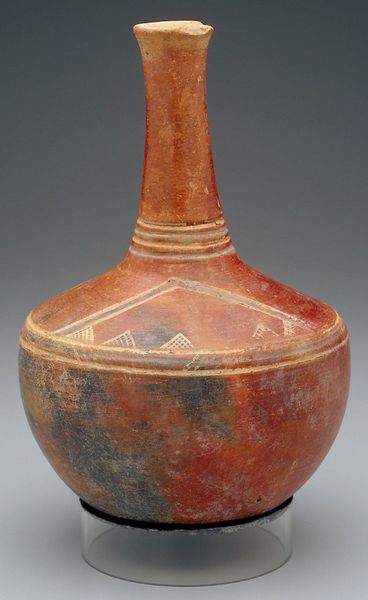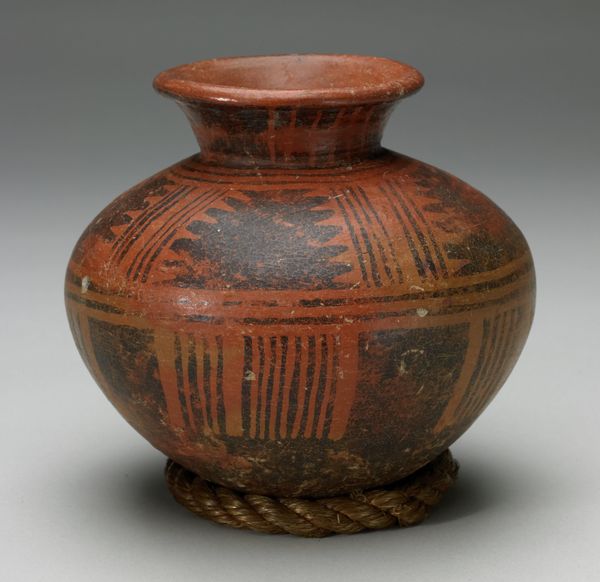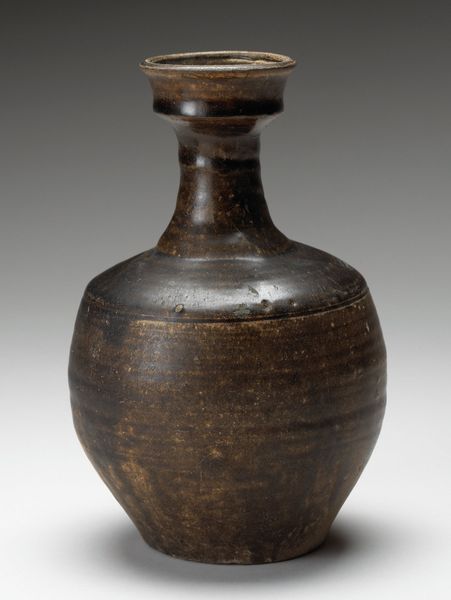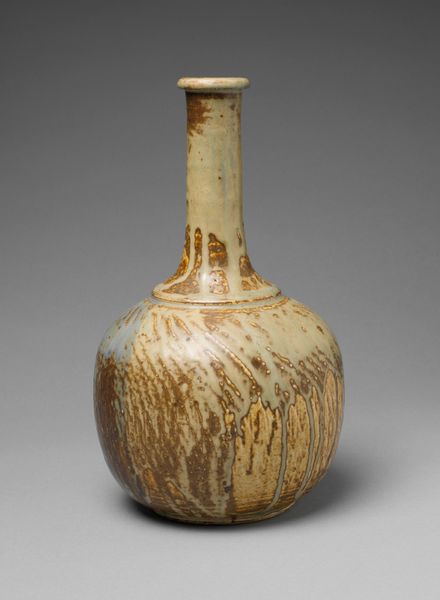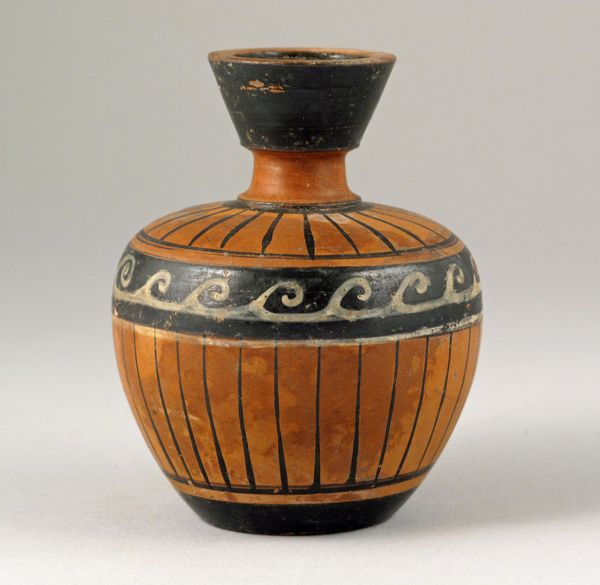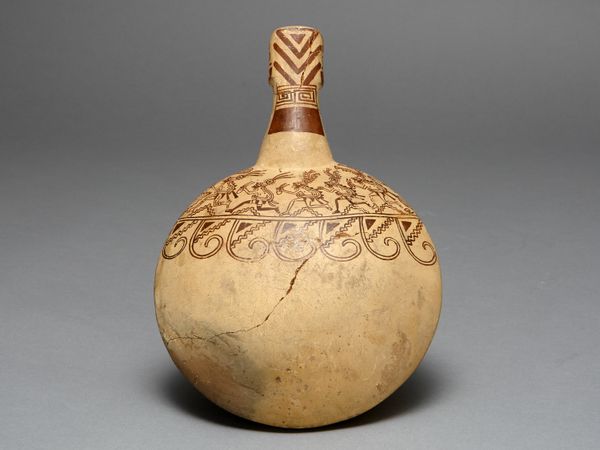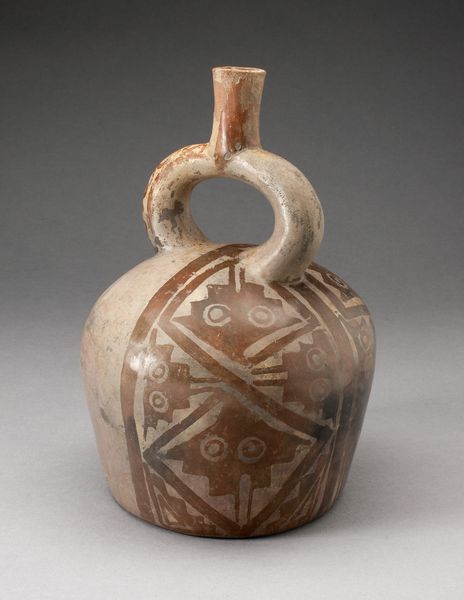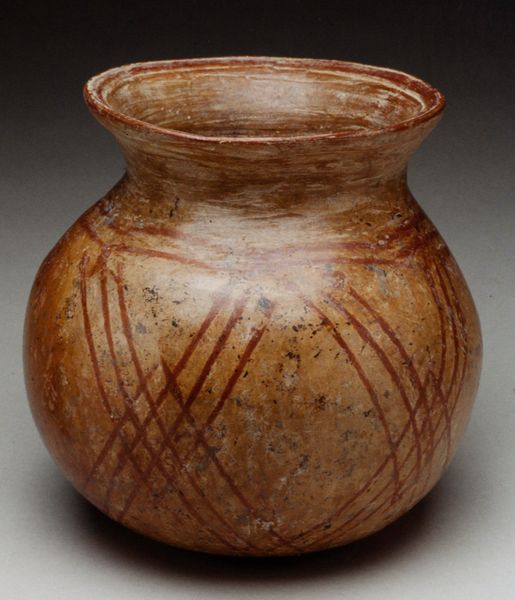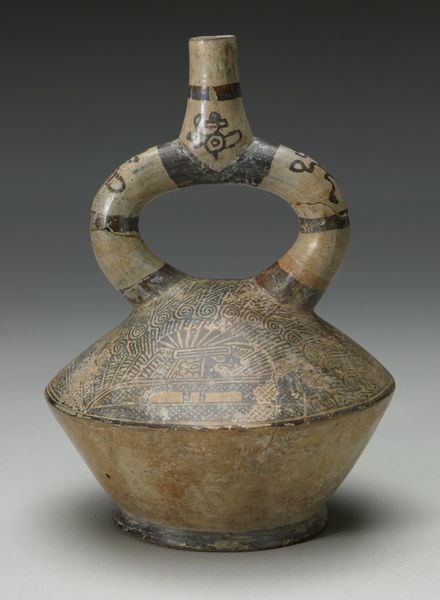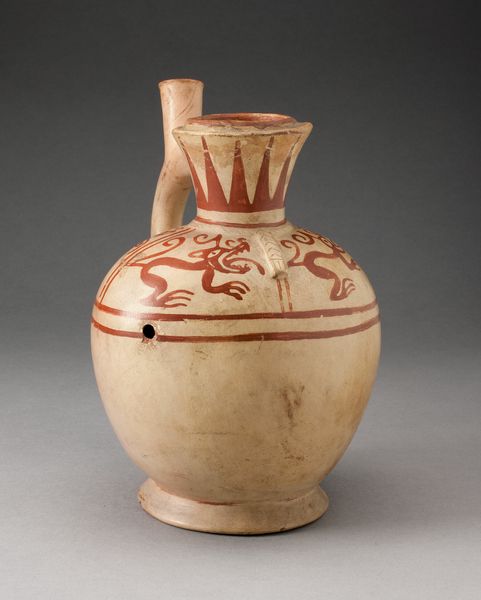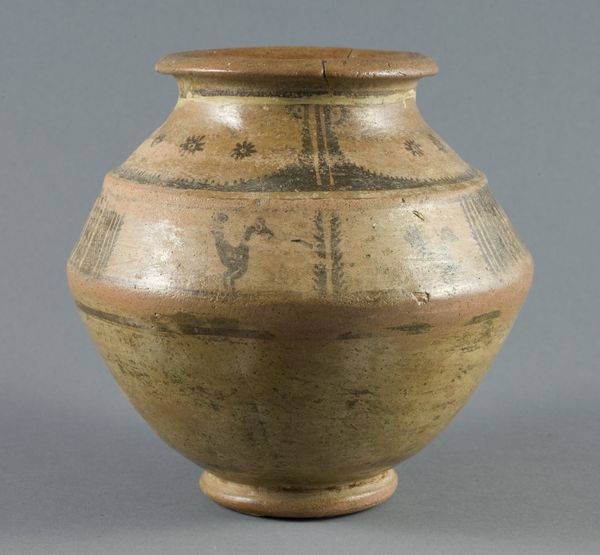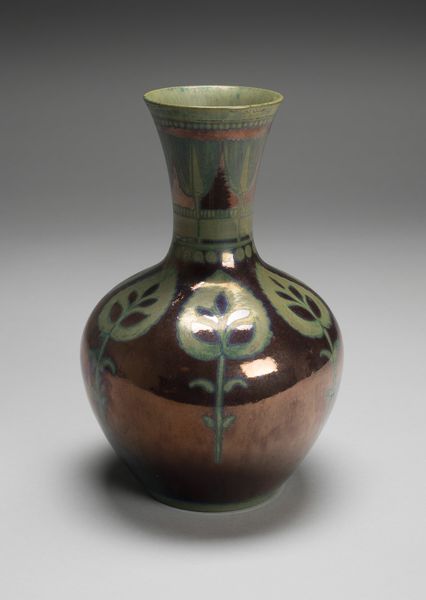
carving, ceramic, earthenware
#
carving
#
ceramic
#
earthenware
#
stoneware
#
geometric
#
ceramic
#
abstraction
#
islamic-art
#
decorative-art
Copyright: Public Domain
Curator: Here we have a ceramic vase, created around the 11th century. This earthenware object, adorned with carving, presents a fascinating example of Islamic decorative art. Editor: My first thought is that it has a muted palette—earthy browns, creams, the faded blue—lending a sense of age and timelessness. There is also this interplay between defined, controlled lines and the crazed glaze beneath that gives it this raw, organic feel. Curator: Indeed. Consider the form. It's quite elegant in its simplicity—bulbous base tapering to a slender neck and flared mouth. The proportions create a sense of equilibrium, even perfection. The craftsman’s intention can easily be decoded through semiotic analysis. Editor: Yes, that harmonious shape speaks volumes, and notice the calligraphic band circling the widest part of the vase, along with abstract floral designs. Arabic calligraphy itself holds deep significance in Islamic culture; it’s not merely decorative, it's a powerful conveyance of cultural values and possibly direct blessings. I am intrigued to decode which sacred writings are depicted, too. Curator: Precisely. And beyond the lettering, we find geometric motifs interwoven throughout the surface. This points to a sophisticated understanding of spatial relations, with the arabesques echoing through form and content. This is Islamic artistry, in my opinion, at its finest—balancing decorative richness with mathematical clarity. Editor: And in that geometric clarity, I am drawn to the glaze and the deep browns of the band. The visual texture suggests how this was made to function and suggests everyday domestic activity—drawing water and presenting it, being passed hand to hand in rituals we can barely imagine. All the implications this object had! Curator: Well, considering its ceramic construction and ornamented designs, it embodies the zenith of design integrity, and is structurally as engaging today as when first completed nearly one thousand years ago. Editor: I think the vase is really a cultural memory capsule. When studying such work, we touch our own past too, but through the lens of art’s powerful universality.
Comments
No comments
Be the first to comment and join the conversation on the ultimate creative platform.
